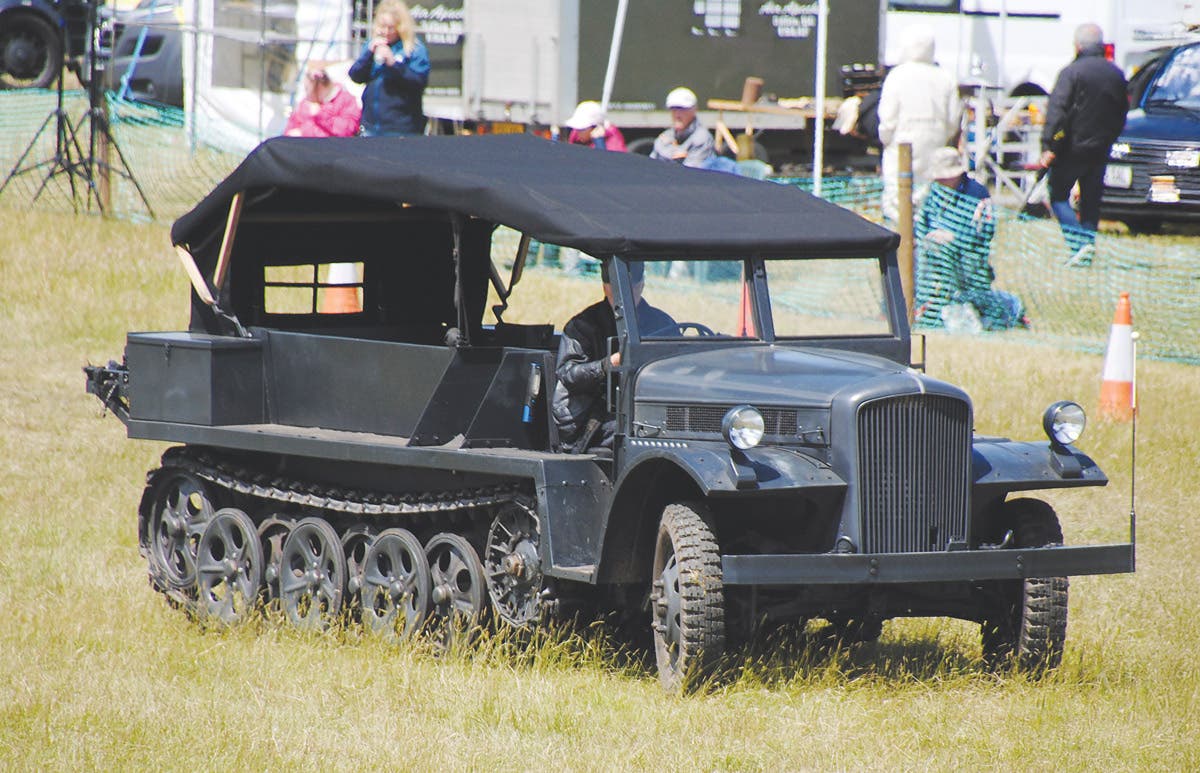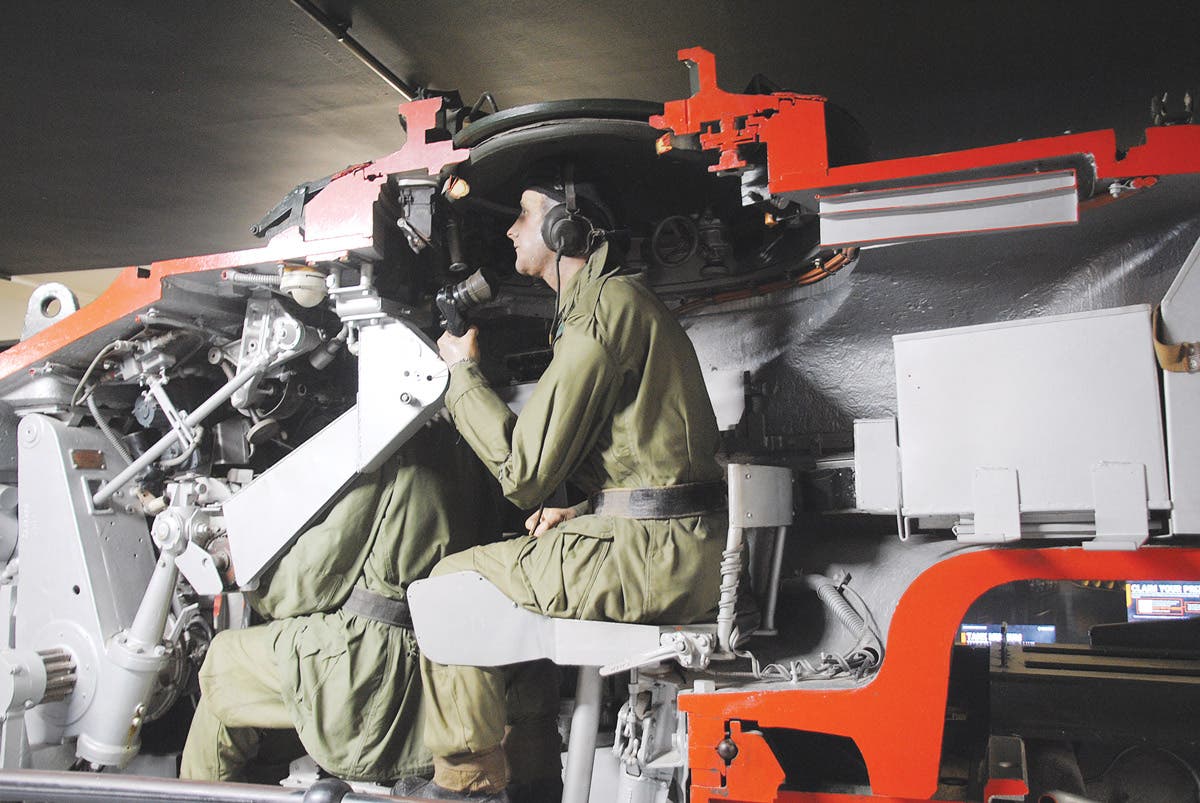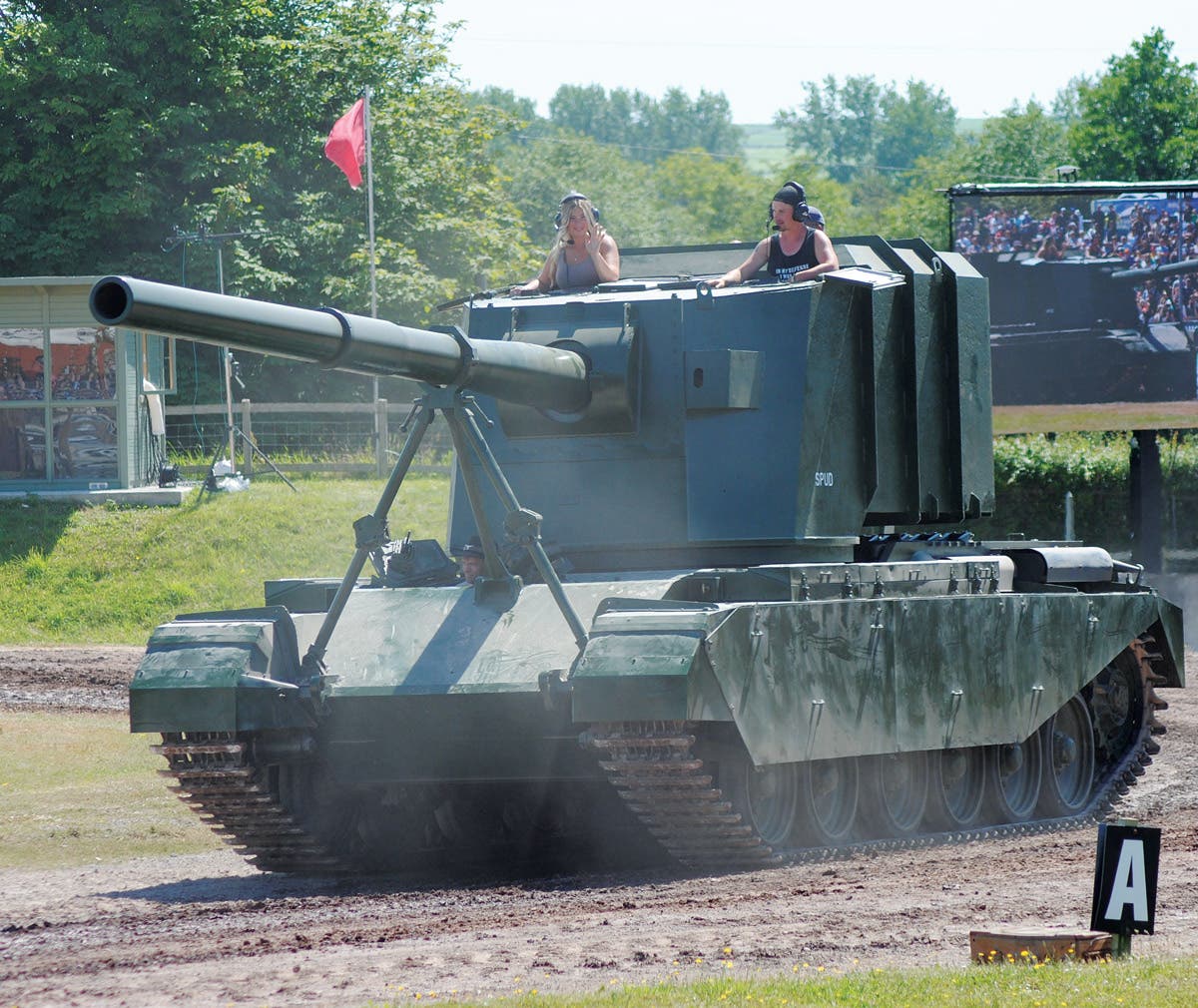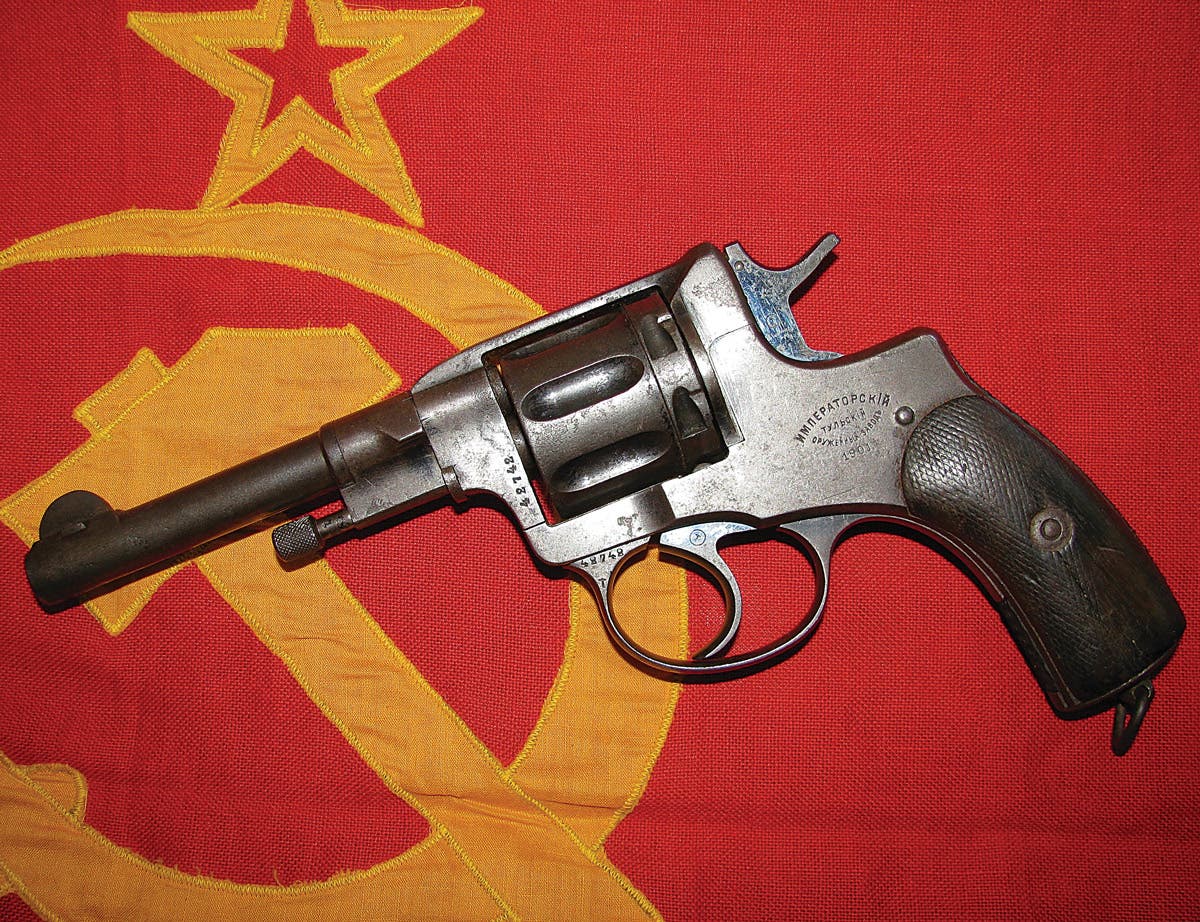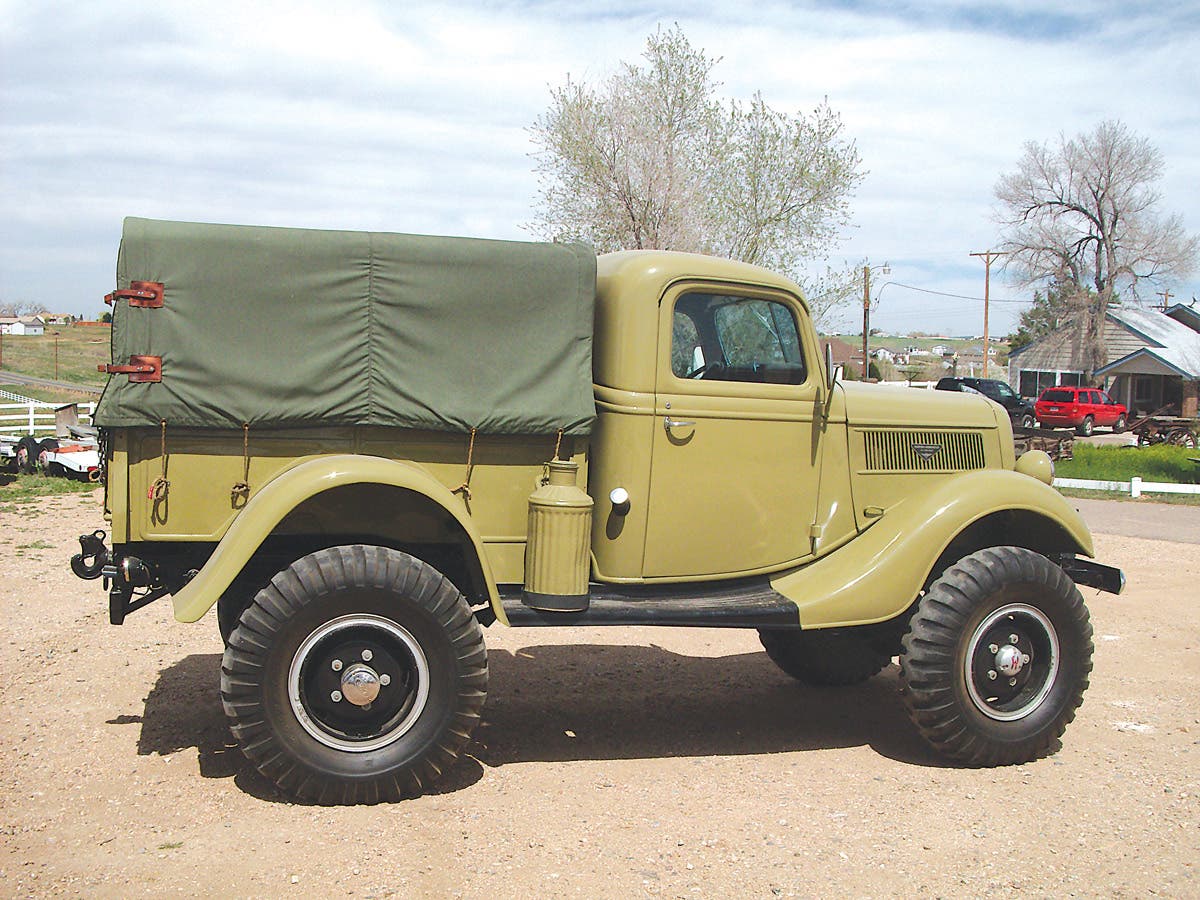The vehicle that came to be known as the M18 was the result of a convoluted development process that began in fall, 1941. At that time U.S. Army doctrine held that a force of dedicated tank destroyers would thwart enemy armored assaults. General Lesly McNair, head of Army Ground Forces, decreed that half of these antitank forces be towed weapons, contrary to the wishes of the head of the Tank Destroyer Center, Colonel A. D. Bruce, who advocated heavily armed, very fast, self-propelled tank destroyers.
Within these restrictions, development progressed through a series of vehicles – the 37mm Gun Motor Carriage T42; the 57mm Gun Motor Carriage T49; the 75mm Gun Motor Carriage T67; and finally in early 1943, the 76mm Gun Motor Carriage T70, which in March 1944 was standardized as the M18. Buick, the builder of the vehicles, dubbed the new tank destroyer the Hell-Cat (notice the hyphen).
The T70 featured a rear-mounted Continental R-975C-1 radial engine which was coupled to a front-mounted Torqmatic transmission. Both the engine and transmission were mounted on rails, which allowed them to slide out for rapid repair or replacement. The vehicle rode on a torsion bar suspension.
The T70 entered production before testing of the six pilot models had been completed. The initial goal was to deliver 1,000 vehicle by the end of 1943. Despite the first production T70 vehicles not being accepted by the Army until July 1943, the 1,000-vehicle annual production goal was met.
The ongoing testing of the pilots revealed deficiencies, which resulted in changes to the vehicle design after production had begun, as well as the decision to return vehicles serial number 684 and below to the factory for modification. The most significant modification made on these early vehicles was a change in transmission gear ratios. Ultimately, however, 650 of those vehicles returned to the factory were converted to M39 and T41E1 Armored Utility Vehicles.
Despite initial plans to produce 8,986 M18s, the changing tide of the war, a shift in Army tank destroyer doctrine, and the growing inadequacy of the 76mm M1 gun against German tank armor resulted in production being limited to 2,507 examples.
The Hell-Cat first saw combat at Anzio, Italy, was the site of the Hell-Cat’s first action, and from there use of the vehicle spread throughout the European campaign. While designed and built to be a tank destroyer, units in the field frequently pressed the vehicles into service as direct-support artillery for infantry. At their peak, in March 1945, there were 540 M18s in use in Europe. Those Hell-Cats are credited with the destruction of 526 enemy armored vehicles, at a cost of 216 of their own.
The M18 also saw service in the Pacific, particularly in the Philippines and Okinawa, but always in the hands of Army units. The US Marines received none of the vehicles, and only two were transferred to the United Kingdom and five to Russia under the Lend-Lease Act.
Although, due to changing doctrine, the US Army did away dedicated Tank Destroyer units immediately after WWII, the M18 remained a potent fighting vehicle, despite the obvious shortcomings of an open-topped fighting compartment and a 76mm gun that was only marginally effective against the latest generation of tanks. Accordingly, in the early 1950s, when the Military Defense Assistance Program (MDAP) was at its peak, many of the M18s, now surplus to the US Army were exported. Yugoslavia was the largest recipient of the surplus Hell-Cats, accepting 240 of the vehicles. NATO allies Italy and Greece received 107 and 127 of the vehicles respectively. Like those sent to Yugoslavia, these M18s were reconditioned in US depots prior to shipping. The Republic of China (Taiwan) was the second-largest recipient of M18s, with 214 of the tank destroyers having been shipped to the island nation.
In the mid-1950s, 55 M18s were shipped to Iran, and 40 to Venezuela.
By the mid-1990s the M18 was no longer in front-line service with these nations, but continued to see service with reserve units. As such, the M18s saw fighting as late as 1991-95 Croatia-Serbia-Yugoslavia conflicts.
For additional reading, see “M18 Hell-Cat Legends of Warfare and M18 Hellcat Tank Destroyer Walk Around”, both available from www.DavidDoyleBooks.com.
*As an Amazon Associate, Military Trader / Military Vehicles earns from qualifying purchases.
David Doyle's earliest published works were occasional articles in enthusiast publications aimed at the historic military vehicle restoration hobby. This was a natural outlet for a guy whose collection includes several Vietnam-era vehicles such as M62, M123A1C, M35A2, M36A2C, M292A2, M756, and an M764.
By 1999, his writing efforts grew to include regular features in leading periodicals devoted to the hobby both domestically and internationally, appearing regularly in US, English and Polish publications.
In 2003, David received his a commission to write his first book, The Standard Catalog of U.S. Military Vehicles. Since then, several outlets have published more than 100 of his works. While most of these concern historic military hardware, including aircraft and warships, his volumes on military vehicles, meticulously researched by David and his wife Denise, remain the genre for which he is most recognized. This recognition earned life-time achievement in June 2015, when he was presented Military Vehicle Preservation Association (MVPA) bestowed on him the coveted Bart Vanderveen Award in recognition of “...the individual who has contributed the most to the historic preservation of military vehicles worldwide.”
In addition to all of publishing efforts, David is the editor of the MVPA’s magazine, History in Motion, as well as serving as the organization’s Publications Director. He also maintains a retail outlet for his books online and at shows around the U.S.


